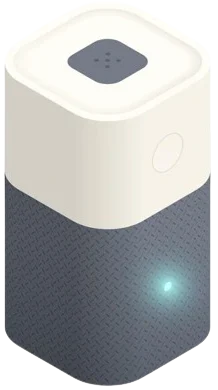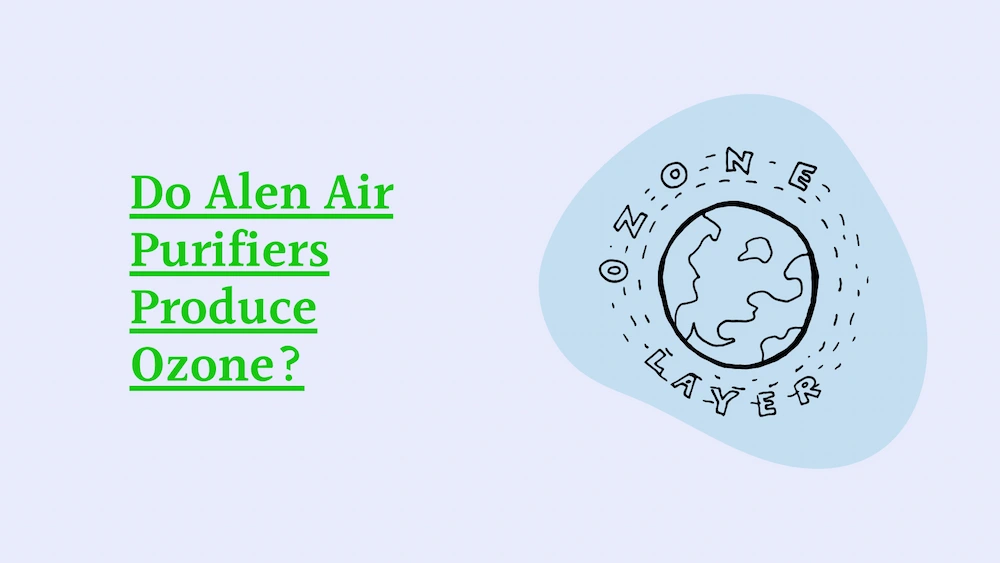In the quest for cleaner indoor air, environmentally-conscious consumers are turning to air purifiers as a solution. However, a crucial question arises – do Alen Air Purifiers emit ozone? This blog delves into the ozone emission of Alen Air Purifiers, highlighting their eco-friendly attributes that drive their popularity, the consequences of ozone production, and how you, as a savvy consumer, can reduce ozone exposure for improved air quality and a healthier environment.
Alen Air Purifiers: Eco-Friendly Guardians of Air Quality
Alen has established itself as a leader in eco-conscious air purifiers. These innovative devices showcase advancements in allergen and pollutant removal, while maintaining a focus on energy efficiency and noise levels suitable for sustainable living.
The allure of Alen Air Purifiers lies in their dedication to sustainability. Each unit is crafted with durability and recyclability in mind, distinguishing them from one-time use alternatives. Moreover, the company’s vision aligns with the increasing global recognition of the importance of eco-friendly air quality solutions.
Prioritizing Ozone-Free Air Purification
The significance of Alen’s pledge toward ozone-free air purification cannot be overstated. Ozone, a reactive gas composed of three oxygen atoms, can occur naturally or be created by human activity. When found in high concentrations in indoor settings, it can pose health risks, especially to those with respiratory conditions. Alen’s emphasis on eliminating this threat underscores its commitment to providing safe, healthy air without compromising environmental well-being.
Ozone Production in Air Purifiers
While most air purifiers are designed to enhance air quality, some use internal processes that inadvertently produce ozone as a byproduct. The concern over ozone-generating air purifiers stems from the potential to create harmful mixtures in the air, particularly when these levels aren’t properly regulated.
The Ozone Dilemma
Exposure to ozone in enclosed spaces can lead to throat irritation, coughing, chest pain, and shortness of breath. Prolonged exposure might exacerbate certain respiratory illnesses and weaken the body’s immune system, making it more susceptible to infections.
It’s important to distinguish between “good” ozone, which occurs naturally in the upper atmosphere and shields the Earth from the sun’s harmful ultraviolet rays, and “bad” ozone, which is found in ground-level pollutants. Ozone produced by air purifiers falls under the latter category when introduced into the indoor environment at concentrations that could be deemed excessive.
Research on Alen Air Purifiers
Understanding the ozone output of Alen Air Purifiers necessitates a closer look at available research and independent studies. Manufacturers may conduct internal tests to verify the safety of their products, but third-party assessments provide an objective view of a device’s ozone-emitting potential. For eco-conscious consumers, this due diligence serves as a critical checkpoint before making an air purifier purchase.
Independent Assessments
Reports and studies examining the ozone emissions from Alen Air Purifiers can give a clearer picture of their ozone production levels. Independent researchers often test these devices in controlled environments, allowing for comparisons against industry standards and emissions guidelines set by environmental protection agencies.
Addressing Consumer Concerns
Eco-conscious individuals rightfully exercise caution when choosing products that might impact both their immediate environment and the wider ecology. The following tips and considerations can help mitigate the risks associated with ozone-emitting air purifiers, granting peace of mind without compromising on air quality.
Limiting Ozone Exposure
If you already own an Alen Air Purifier or are considering purchasing one, there are several steps you can take to minimize ozone exposure. Placing the purifier in a well-ventilated area can help disperse any emitted ozone, preventing its buildup in a single location.
Seeking Ozone-Free Alternatives
For those who prefer a zero-tolerance approach to ozone, there are numerous air purification technologies available that do not generate this gas. High-Efficiency Particulate Air (HEPA) filters, activated carbon, and ultraviolet germicidal irradiation (UVGI) are all effective methods for cleaning the air without the ozone byproduct.
Conclusion
The debate surrounding Alen Air Purifiers and their ozone emissions underscores the intricate balance between purifying indoor air and maintaining environmental integrity. As an eco-conscious consumer, your role is critical in advocating for products that champion health and sustainability in equal measure.
In conclusion, an informed understanding of air purifier technology, backed by independent research, will guide your decisions toward products that align with your values and contribute to a cleaner, greener future. Remember, the key to eco-friendly air purification is not just what an air purifier can do, but what it refrains from doing – producing ozone. With Alen or any air purifier purchase, always prioritize the well-being of your home and the planet with every breath.
Fausto Bhangi, the creator of Iniciar Sesion, has been delving into air purifiers and indoor air quality since 2019. As our chief tester, he oversees all the evaluations we conduct on air quality products. Hence, you’ll consistently find his name associated with our reviews.

